This is one of the most comprehensive HVAC books that you will find anywhere. Our aim with this “best books for HVAC” review is to provide you with the important information that you need to ensure that you purchase the right book for your requirements.
You will find HVAC books for beginners on our list as well as books for HVAC experts. We have also included HVAC textbooks for those wanting to study for and pass examinations in the industry.
In each of our reviews, we will let you know what customers who purchased the books thought about them. All of these books are available from Amazon, so you can purchase the best HVAC books in total confidence. Here is an overview of the best HVAC books that made our final review list:
Table of Contents
Best HVAC Books Reviews From Amazon: Updated 2025
| Ranking | Book | Level | Our Rating | Price |
|---|---|---|---|---|
#1. | Electricity for Refrigeration, Heating and Air Conditioning | For HVAC technicians that want an introduction to the electronics in control systems |  (4.7 / 5) (4.7 / 5) | CHECK PRICE ON AMAZON |
#2. | Low-Pressure Boilers (4th Edition) | For Beginner |  (4.7 / 5) (4.7 / 5) | CHECK PRICE ON AMAZON |
#3. | Guide To NATE/ICE Certification Exams | Examination guide |  (4.6 / 5) (4.6 / 5) | CHECK PRICE ON AMAZON |
#4. | Refrigeration and Air Conditioning Technology | For Beginner |  (4.4 / 5) (4.4 / 5) | CHECK PRICE ON AMAZON |
#5. | Modern Refrigeration and Air Conditioning | For Beginner |  (4.4 / 5) (4.4 / 5) | CHECK PRICE ON AMAZON |
#6. | HVAC Level 2 Trainee Guide | Advance Level 2 |  (4.4 / 5) (4.4 / 5) | CHECK PRICE ON AMAZON |
#7. | HVAC Level 1 Trainee Guide | For Beginner |  (4.4 / 5) (4.4 / 5) | CHECK PRICE ON AMAZON |
#8. | Residential Construction Academy HVAC | Introductory for installation and repair |  (4.3 / 5) (4.3 / 5) | CHECK PRICE ON AMAZON |
#9 | Refrigeration and Air Conditioning Technology: (Lab Manual) | Lab manual |  (4.3 / 5) (4.3 / 5) | CHECK PRICE ON AMAZON |
#10. | HVACR 101 (Enhance Your HVAC Skills!) | For Beginner |  (4.1 / 5) (4.1 / 5) | CHECK PRICE ON AMAZON |
#11. | Troubleshooting HVAC-R Equipment | For Beginner |  (3.9 / 5) (3.9 / 5) | CHECK PRICE ON AMAZON |
#12. | Step by Step passing the EPA 608 certification exam | Examination guide |  (3.4 / 5) (3.4 / 5) | CHECK PRICE ON AMAZON |
What is HVAC?
HVAC is an acronym for Heating, Ventilating, and Air Conditioning. In an HVAC system, the environmental conditions within a home or office are controlled. This is the cooling and heating of the environment. Sometimes you will see HVAC/R used, and the “R” stands for refrigeration.
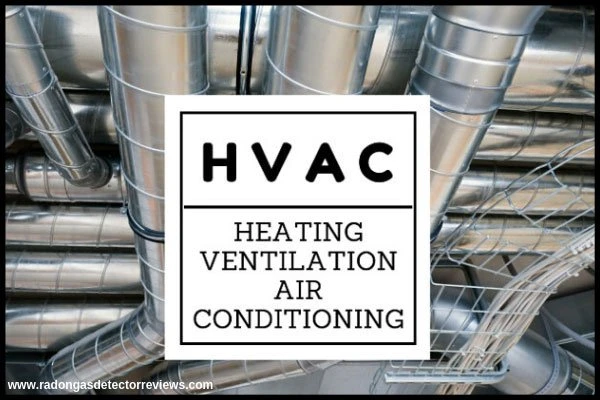
An HVAC system will also control the environmental humidity level. It achieves this by controlling the distribution and movement of air inside a room. The HVAC system also takes care of the cleanliness of the air within the environment.
The 3 main types of the HVAC system are:
- A split and window air conditioning system
- A combined air conditioning and heating system
- A central air conditioning system
These systems do not all work in the same way. Some HVAC systems will serve larger environments, and some are smaller and faster. HVAC systems vary in their efficiency in different situations.
With a window air conditioning system, the fan blows air through the associated coils. This enables the separation of cold and heat. The heat is dissipated in the air outside, and the cold is introduced into the internal environment.
For larger applications, a split air conditioning system is best. This system will split the cold from the hot again. For the cold side, there is an expansion valve and a cold coil. These are usually located in an air handler or furnace. The handler blows air across the coil, and this cooled air is then distributed via air ducts around the environment.
With combined air conditioning and heating systems, the environment receives an “all in one” benefit. This is cooling and heating in a single package. You will find these on building rooftops or in dedicated mechanical rooms.
All of the cooling and heating components are in a single unit. A centrifugal blower or fan will distribute the cold or hot air throughout the environment. Residential buildings usually have a combined heating and cooling system.
For larger environments, there is usually a central air conditioning system. With a central AC system, there is a condensing unit that contains a condenser coil, a compressor, and a cooling fan. They also use an evaporator coil located in an air handler or furnace.
The electrically powered compressor will pump refrigerant around the system which removes heat from the environment. The condensing unit coil dissipates this removed heat externally. Water vapor will condense on the coil and a drain pan collects this. The air handler fan circulates the cooled air around the environment maintaining a constant temperature.
The energy consumption of an HVAC system is dependent upon the amount of energy it requires and several other factors, including:
- Component efficiency
- The size of the system in the internal environment
- The climate
- The amount the system is used
- The fuel type to power the system
There are industry-standard ratings for HVAC systems, and the most popular ones are:
SEER (Seasonal Energy Efficiency Ratio) –This measures the efficiency of an AC or heat pump system. Higher SEER scores mean greater efficiency and energy saving.
AFUE (Annual Fuel Utilization Efficiency) – this is a rating of gas or oil furnaces and wasted amounts. The AFUE rating is a percentage figure and higher ratings mean more efficient systems.
HSPF (Heating Seasonal Performance Factor) – this rating is about the efficiency of a heat pump in heating mode. Again the higher the rating the more efficient and cost-effective.
Wattage – this is an electrical rating for an HVAC system measured in kilowatt-hours. The most important factor with a wattage rating is speed.
HVAC Books Review from Amazon: Updated 2025
We took an in-depth look at a number of the best HVAC books and out of the many thousands available, only the best 12 made it to our list. We assessed the HVAC books that ended up here on the quality of information they provide, the ease of reading, and the price of the book.

We have provided you with a detailed review of all 12 books here. All of the most important information is here for you to make the correct decision on the best HVAC textbooks for you.
1. Electricity for Refrigeration, Heating, and Air Conditioning: HVAC Book Review
If you are a student of HVAC and need to know how modern electronic control systems work then this is a fine publication. This is a very easy-to-understand book that takes a very practical approach to the information about electronics HVAC engineers need when they are in the field.
You will not find any mind-boggling theory in Electricity for Refrigeration, Heating, and Air Conditioning. The book provides several system diagnostic and troubleshooting procedures and methods to help you become a first-class HVAC engineer.
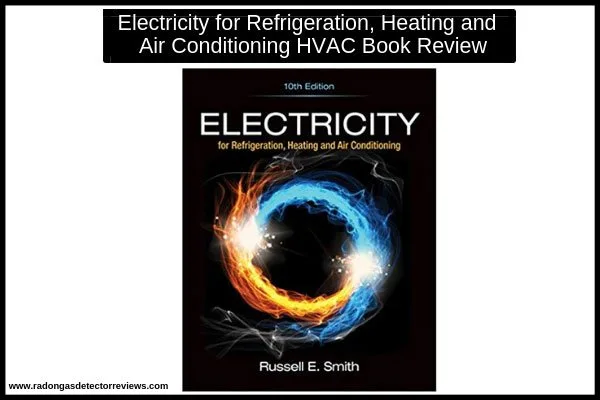
If you are new to electronics, then this book has you covered with the basics of circuits and electricity. The book contains schematics for several applications used in the HVAC industry, and there is a lot of detail about the design of control systems, the types of systems, and more.
There are learning objectives and learning aids in each chapter to help you progress. Also, you will see chapter summaries, review questions, and key terms defined. This will all help you to understand and retain what you have learned.
The book contains detailed information about relays, contactors, manual and pressure switches, thermostats, overload, and other cutting-edge electrical components that the student will encounter in the field.
2. Low-Pressure Boilers (4th Edition) HVAC Book Review
If you are an HVAC student and need to know about low-pressure boilers, then look no further than this book. Inside this edition, you will learn about the operation and components of boiler systems used in schools, hotels, apartment blocks, and other large buildings.
The information presented in Low-Pressure Boilers is in an easy-to-read format. A lot of books on the same subject are very uninteresting and hard to digest but not this one. It is ideal for people that are fairly new to the subject and will prepare them well for taking and passing the associated examinations.
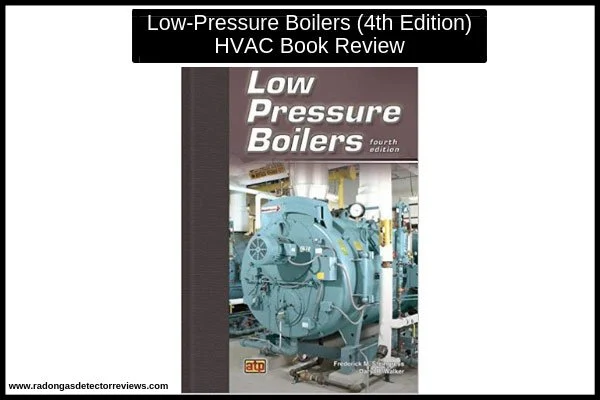
Each chapter of the book has a review of the key points at the end which is very helpful to reflect on and retain what you have learned. There are also quizzes to test your knowledge. There is a lot of technical information that you need to know if you are a beginner with low-pressure boilers and this book will provide this to you in a way that you will understand.
If you want to learn fast, then you need a copy of Low-Pressure Boilers. You will pick up a great deal of practical knowledge, which is very useful out in the field. There are lots of diagrams and illustrations to help you make sense of everything.
Illustrations and photographs appear throughout the book. These are very helpful to apply to current equipment and control systems. You will also find symbols regularly introduced and explained on a consistent basis.
A lot of people in the HVAC industry say that this is the industry standard read about low-pressure boilers. It focuses on boiler operation and in this latest version, you can learn about boiler control systems, emission analysis and control, personal protective equipment, and the principles of steam.
There is also a chapter about cooling systems that explains the principles of refrigeration and the equipment used, procedures for refrigerant recovery, and chilled water systems. Full-color photographs and illustrations help to make everything a lot clearer. Many licensing agencies recommend Low-Pressure Boilers as a good study aid for examinations.
3. Guide To NATE/ICE Certification HVAC Exams Book Review
If you are an HVAC installation or service technician and you want to pass the NATE and ICE exams for your certificate, then you need this book. This book has two sections for easier reading. The first section discusses the important concepts and procedures, and the second section has over 2,400 study questions.
The second section of the Guide to NATE/ICE Certification Exams book contains questions that cover really important topics such as system troubleshooting, system tools, and components, EPA certification, electrical theory, hydronic heating, airflow, dust fabrication, and much more.
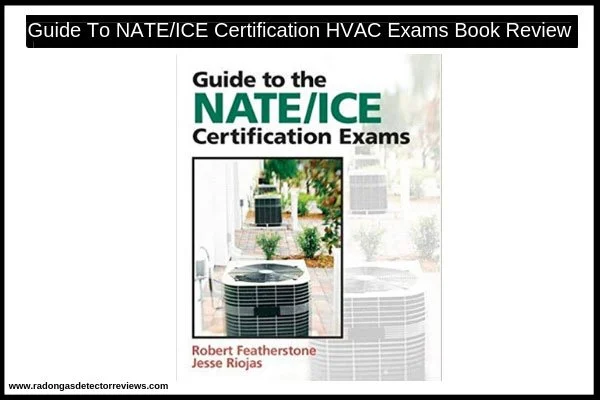
For every topic, there is a practice test that you can take as well as an answer key. This will go a long way to help you assess your understanding of each topic. You will find that virtually every aspect of the NATE/ICE examinations is covered in this book. The reviews of the important exam subjects are concise.
In the second section containing the questions, you will find questions and statements that are similar to those included in real examinations. By going through these, you will fully test your understanding of each subject and fully prepare yourself for the actual exam.
At the back of the book is an answer key which you can use to check your progress and really test your understanding of the subjects covered in the book. The use of bold typeface for the key terms helps you to identify the essential terms that you need to learn and fully understand.
In this latest edition of Guide To NATE/ICE Certification Exams, there are more test questions on refrigeration and Hydronics. The refrigeration section of the book also contains concepts for troubleshooting that explain some of the best techniques to use. This is excellent preparation for the examinations.
There are more illustrations in the latest edition which are really helpful in helping you to visualize the most important concepts. Also in this edition are acronym lists that will assist you further when preparing for the NATE/ICE certification examinations.
4. Refrigeration and Air Conditioning Technology: HVAC Book Review
If you need to develop the knowledge and the skills to troubleshoot and maintain modern air conditioning, refrigeration, and heating systems, then this book will guide you every step of the way. This is an easy-to-understand book that provides a lot of practical hands-on guidance and will provide you with a solid knowledge foundation.
Refrigeration and Air Conditioning Technology helps you to understand today’s complex HVAC systems and their repair and maintenance. It also covers environmental issues and the solutions to these. There is a real focus on sustainable technologies in this book and green awareness and new technologies are included.
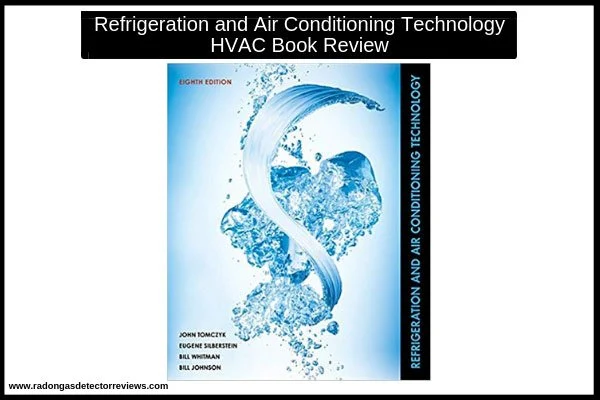
If you are a student and want to achieve technician certification then you will find all of the information that you require in this book. You will learn about all of the important organizations that provide their support to both mandatory and voluntary technician certification in the HVAC industry.
You will also learn about the most important green organizations and what their current and future goals are. For example, there are plans in place to create green buildings and green mechanical rooms all across the United States.
Refrigeration and Air Conditioning Technology was written to the National Skills Standards for technicians in HVAC/R. This book provides excellent preparation for examinations and certifications such as NATE, United Association STAR, ICE, HARDi, and RSES.
The book contains a special section about career opportunities in the modern HVAC/R industry and includes a detailed list. There is also a “service call” feature which adds a good degree of reality. You will need to think in service mode and apply what you have learned and put these skills into practice.
The 8th edition has several new additions, especially in the area of refrigeration. There are new photographs in the book on the tools required as well as information about gauges, manifolds, Bluetooth technology equipment and more required for success in the workplace today.
5. Modern Refrigeration and Air Conditioning HVAC Book Review
This book provides the right combination of theory, development of skills, and techniques to use to install and maintain HVAC and refrigeration systems. It takes the reader progressively from theory to practice in an easy-to-understand way. Everything is presented logically with associated images for improved learning.
Modern Refrigeration and Air Conditioning contains information about a career in the HVAC/R industry and aims to prepare the reader to be “workplace-ready”. The book is now in its 20th edition keeping pace with the changes in the industry.
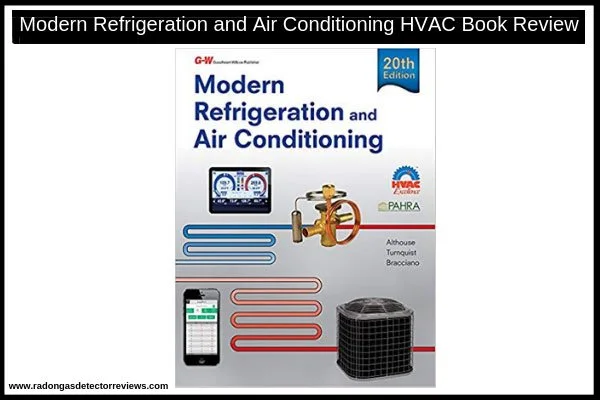
The latest edition of Modern Refrigeration and Air Conditioning includes a number of technical updates including information on variable refrigerant flow systems, microchannel heat exchangers, code alert features, and energy efficiency. The aim here is to provide the reader with the most up-to-date education in HVAC/R.
This book focuses on HVAC/R career and education success with well-presented content that includes great illustrations and diagrams to fully support the text. You will find that the book is well-organized and very readable. There is a new chapter on safety in the latest edition.
Also new in the 20th edition of Modern Refrigeration and Air Conditioning is a chapter on careers. There is also a service call section where the reader needs to place themselves into various service scenarios. The information conforms to PAHRA and HVAC Excellence standards.
There are chapters on basic electricity and electronics, electrical control systems and motors, refrigeration systems in the home, air conditioning and heating systems, energy management, refrigeration system design, and the installation and servicing of commercial systems.
6. HVAC Level 2 Trainee Guide Book Review
This well-put-together second-level guide includes illustrations throughout to help the reader comprehend the theory. Industry experts contribute a number of helpful hints and there are review questions throughout the book. There are 13 chapters in this book covering the full range of HVAC/R subjects.
The HVAC Level 2 Trainee Guide provides the basic concepts of alternating current (AC) for the reader which is essential in modern-day HVAC/R equipment. It explains the difference between single and three phases AC and discusses electric motors and transformers.
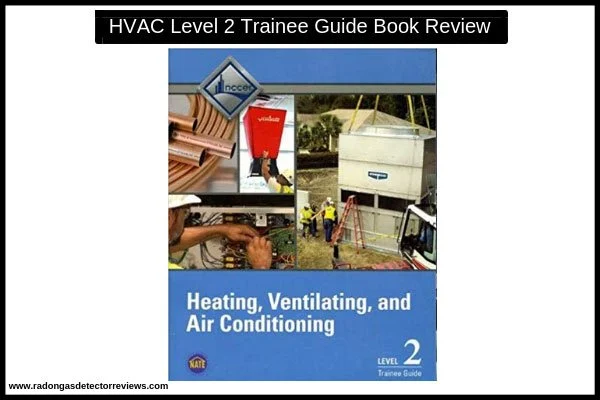
There is a comprehensive chapter on refrigerant compressors and there are lots of tips and advice on how an HVAC/R technician should diagnose compressor issues and fix them. Also, there is a discussion about the types of refrigerants and oils used in modern refrigeration systems and the environmental laws around the disposal of older refrigerants.
A comprehensive section on detecting leaks, charging, and recovery provides the reader with excellent guidance on how to provide the different services with the environment in mind. There is a great deal of hands-on practice in this chapter which we found very readable and understandable.
The heat pumps chapter introduces them as a very efficient way to generate electrical heat. There is also a chapter on basic maintenance which introduces common tasks for HVAC/R equipment such as belt installation and lubrication. The reader will learn how to perform inspections and service popular heating/cooling systems and gas furnaces.
Other sections in the HVAC Level 2 Trainee Guide include vents, chimneys, and flues, duct systems both metal and fiberglass/fabric), commercial airside systems, equipment for air quality, and an introduction to hydronic systems.
7. HVAC Level 1 Trainee Guide Book Review
This is the introductory guide to HVAC that supports the NCCER (National Center for Construction Education and Research) curriculum. This guide has the same qualities as the level 2 guide above in that the presentation is good, there is a lot of advice from experts in the industry and the illustrations really help with learning.
There is an introduction to HVAC which covers all the basics and also discusses the type of career opportunities that exist in the industry. This includes details of how apprenticeship programs work which we found useful. The chapter also covers safety, trade licensure and the various EPA guidelines.
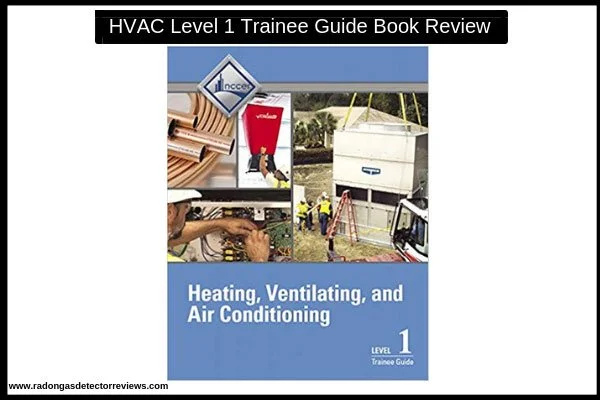
The HVAC Level 1 Trainee Guide then discusses mathematics used in the HVAC/R trade, including the measurement of temperature, lines, vacuum, area, pressure, volume, angles, and weights. You will not find this in all introductory HVAC/R guides, and we liked that this was covered.
An introduction to basic electricity follows discussing common electrical AC and DC components as well as electrical safety. There is even a section on interpreting wiring diagrams used in the HVAC/R industry.
The next three chapters in the guide are introductions to heating, cooling, and air distribution systems. We thought that these were very good and provided the reader with a good grounding in all three areas.
The final three chapters cover piping practices (both copper and plastic) and soldering and brazing techniques and the tools required to perform this properly. At the end of the guide is a chapter about carbon steel piping and how to identify the fittings and materials as well as installation and jointing practices.
8. Residential Construction Academy HVAC Book Review
We liked the hands-on and practical approach that this book provides. The book supports the HBI / NAHB skill standards that an advisory board of educators and leading industry experts developed.
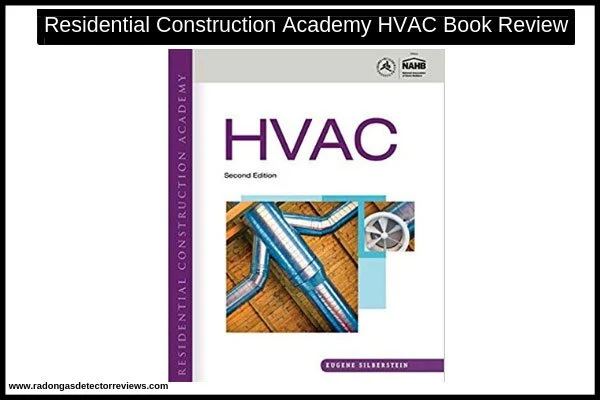
Residential Construction Academy HVAC is a comprehensive guide that has many full-color illustrations and photographs to assist with learning. The book is for aspiring HVAC technicians who are interested in the installation and service of residential HVAC systems.
We liked the step-by-step instructions and the images placed side by side. This is certainly a good learning aid. The instructions provided in the book were very clear, and it is an enjoyable read.
Another great feature of this book is the green checklists and the green tip boxes. These are really helpful in highlighting important tips in the text. The green is symbolic of the move by the HVAC industry to environmentally friendly construction methods.
In the Residential Construction Academy HVAC book, there are detailed chapters on troubleshooting to cover the most common mechanical and electrical problems that happen in the real world.
The theory used in the book is solid and this is associated with a hands-on approach using proven techniques endorsed by HVAC professionals to do the job right the first time. Every chapter has a series of review questions which we found helped a lot to reinforce learning.
The latest edition contains enhanced information about the wiring of systems and includes wiring diagrams. There is also a new chapter on testing systems and balancing them and some new safety chapters.
9. Refrigeration and Air Conditioning Technology: Concepts, Procedures and Troubleshooting Techniques (Lab Manual) HVAC Book Review
This is different from all of the other HVAC books in this review, as it is a lab manual that accompanies the Refrigeration and Air Conditioning Technology book that we reviewed earlier.
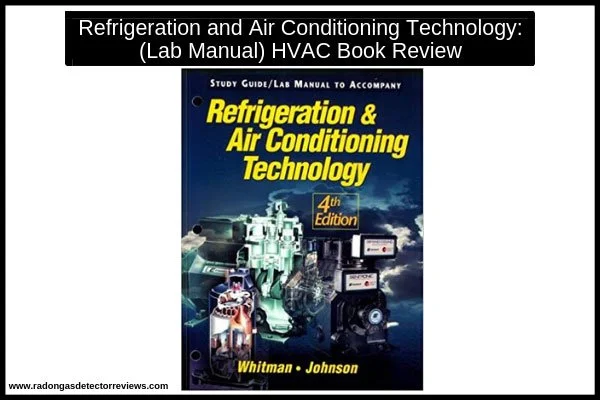
The aim of Refrigeration and Air Conditioning Technology: Concepts, Procedures and Troubleshooting Techniques (Lab Manual) are to enhance the experience that you have in the lab with such things as lab activities, materials lists, lab objectives, step-by-step instructions, review questions and a lot of illustrations.
This well-presented lab manual will certainly enhance the experiences that you have in the lab and is an essential add-on to the Refrigeration and Air Conditioning Technology book. We were not able to access a lab to thoroughly test this manual out but going through nearly 500 pages we could see that it was high quality and would be of significant benefit.
10. HVACR 101 (Enhance Your HVAC Skills) Book Review
The HVACR 101 is aimed at entry-level HVAC technicians, apprentices, and students in their first year. The book provides a first look into the world of HVAC and gives the reader a really thorough introduction to the industry.
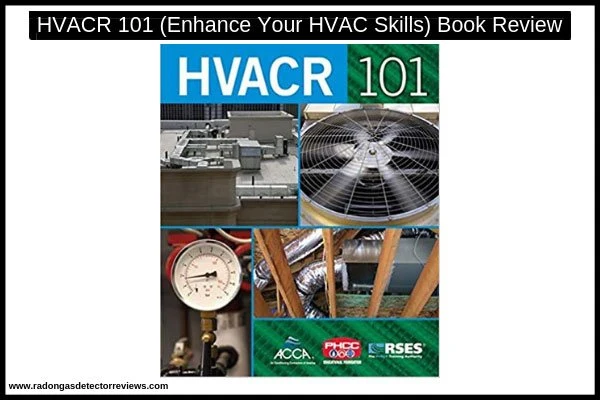
This book is the conclusion of the contributions made by industry-leading bodies such as the ACCA (Air Conditioning Contractors of America), the PHCC (Plumbing, Heating, Cooling Contractors Association), and the RSES (Refrigeration Service Engineers Society).
All of these organizations demand high standards and have a number of cutting-edge resources to offer which is evident in the book. The book starts off by introducing simple HVAC concepts to the reader to provide a good overview of the HVAC world and its most important systems and components.
The book does a good job of progressing from the simplest concepts to the more difficult ones. After the basics, the reader learns about HVAC/R inspection and maintenance, installation and service, and customer service. We liked the practical examples provided in this book and its building-block approach. It is a good guide to understanding the basics of HVAC/R.
11. Troubleshooting HVAC-R Equipment Book Review
This is another book on the fundamentals of HVAC/R systems and should appeal to the homeowner as well as entry-level HVAC technicians. It has a straightforward approach to maintaining and repairing residential HVAC/R systems and there is information about commercial equipment as well.
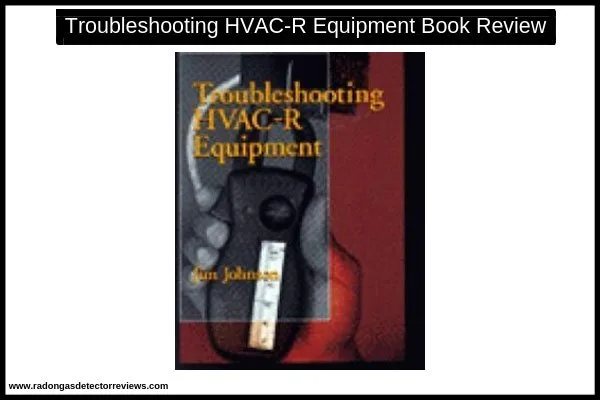
Troubleshooting HVAC-R Equipment provides a number of troubleshooting problems that help the reader to develop their skills to attempt real repairs and maintenance. A number of experienced professionals contribute to this book and there are also a number of troubleshooting charts supplied by popular manufacturers such as Trane and Smokemaster.
We liked the detailed troubleshooting scenarios in this book as it makes you think through problems and develops basic troubleshooting techniques. The book is easy to understand and covers refrigeration fundamentals as well as the basics of electrical components used in HVAC/R.
If you are only interested in domestic HVAC/R, then this has its section, as does the commercial equipment. It is a good all-around read, but sometimes we felt that it lacked detailed explanations.
12. Step by Step Passing the EPA 608 Certification Exam HVAC Book Review
This is a short guide to passing the EPA 608 refrigeration examinations. If you are looking to take and pass the Core, Type I, II, and III, and universal EPA exams, then this guide can certainly help you.
What we liked most about this exam guide were the practice questions that have come up with previous examinations. There is a step-by-step approach used in this book and at the end of each section, there are review questions.
We noticed several grammatical and spelling errors in Step by Step passing the EPA 608 certification exam which was not helpful. It does contain some useful information and should provide some assistance with exam preparation.
Things to Consider before buying Best HVAC Books: Buying Guide
Looking for the best HVAC books to enhance your skills or kickstart your HVAC career? With thousands of titles available, choosing the right one can feel overwhelming. Whether you’re a beginner HVAC technician or a seasoned professional preparing for certification, it’s essential to find the right book that matches your goals and skill level.
🔍 What Type of HVAC Book Do You Need?
Start by identifying your level of expertise:
Are you new to HVAC? If so, look for HVAC books for beginners or entry-level guides that explain the fundamentals in simple terms.
Already working in the field? Then, advanced HVAC engineering books or guides for specialized systems might be more suitable.
Preparing for certification? Go for focused HVAC certification prep books such as those for NATE, ICE, or EPA exams.
Each type of book serves a different purpose—whether it’s learning how HVAC systems work, understanding complex electrical controls, or passing a licensing exam.
Does Book Age Matter in HVAC?
Unlike fast-paced tech industries, HVAC systems evolve slowly. Many HVAC systems installed 10–15 years ago are still in operation today. So don’t be too concerned about the publication year unless you need the latest HVAC codes or refrigerant regulations. A well-written older book can still be a goldmine of valuable information.
How Much Should You Spend?
When it comes to HVAC learning materials, the saying “you get what you pay for” holds. While some affordable HVAC training books cover the basics well, more comprehensive HVAC textbooks come at a higher price but offer deeper insights and broader coverage.
If you’re pursuing certification or looking to boost your career, investing in a high-quality HVAC book can pay off in the long run, not just in knowledge, but in job opportunities, salary, and efficiency on the job.
Our Top HVAC Book Recommendations
Here are some of the top-rated HVAC books for technicians and students:
“Electricity for Refrigeration, Heating, and Air Conditioning” – Perfect for technicians who want to master the electrical side of HVAC systems.
“Low Pressure Boilers, 4th Edition” – A go-to resource for anyone working with boilers.
“Refrigeration and Air Conditioning Technology” – Arguably the best HVAC introductory book out there; ideal for both students and apprentices.
“HVAC Level 1 and Level 2 Trainee Guides” – Excellent step-by-step guides aligned with real-world HVAC training programs.
“Guide to NATE/ICE Certification Exams” – A must-have for anyone preparing for HVAC certification exams.
Frequently Asked Questions about Best HVAC Books: FAQ
Q1. How much should I spend on an HVAC book?
You get what you pay for. We have shown you some of the best HVAC books, and if you are serious about your HVAC career, then you need to invest in your education.
Q2.Which of the HVAC textbooks is best for me?
This depends on what you are looking for. This review contains a mixture of books on HVAC specifics, introductory books, and examination guides. You need to determine at what stage you are and then make the appropriate choice.
Q3.Isn’t all of the information available for free online?
No, it isn’t. Most of these books contain advice and tips from HVAC industry experts that you will not find online.
Q4.How important is it for me to learn about refrigeration systems?
We believe that this is very important. Why narrow down your options? The demand for HVAC/R technicians is high, so learn everything that you can.
Q5.Is it worth taking the NATE/ICE and other exams?
Yes, it certainly is. The more qualifications and certifications you have, the better, as this will open more doors for you in your HVAC career.
Final Words
We hope that you found this to be one of the best HVAC book reviews available. We wanted to make this as detailed and comprehensive as possible so that you have all of the information that you need to purchase the best books for HVAC
